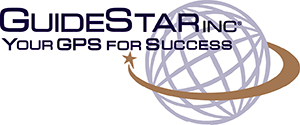
Character is a critical element of success for any business – public or private, for profit or not for profit – to move forward. Character has two sides:
- Performance Character is Intrapersonal, internally driven, and resides within the analytical left-brain. It focuses on the technical aspects of work and being able to do the best job one can do individually.
- Totally under the control of the individual
- Representative traits: Conscientiousness; taking responsibility and accountability for one’s actions; having the perseverance, commitment, and diligence to do a job correctly in all aspects; exercising self-control when overcome by emotions that might otherwise derail one’s efforts.
- Moral Character is Interpersonal, externally directed, and resides within the creative, reflexive right brain. It addresses how people can be their best in working with others and focuses on all aspects of work where human interface occurs.
- Always about being the best person we can be toward others.
- Representative traits: Respect and fairness toward others; being honest and trustworthy, which means following through on commitments and promises to others; putting others first; being a “good citizen” who accepts and exercises social responsibility to one’s community and those who reside in it.
Note that Moral Character traits of “Trustworthiness” and “Caring” are critical traits for building strong relationships. In short, people don’t care how much you know until they know how much you care, which applies to every stakeholder with whom a person interacts. Figure 1 below compares and summarizes both sides and also includes representative behaviors of each.

Decisions
High-performing companies tap into both sides of Character.
Our research[ii] has shown high-performing companies have relatively low turnover and high retention because they “cracked the code” of having personal values aligned with those of the company, and in doing so have created safe environments where people can be their authentic selves at work.
Shared Core Values are a mark for high-performing companies. Employees bring their individual character to work each day, so the opportunity exists to have them engage those traits for the most effective results each day. High-performing companies do this by underpinning performance expectations with a well-defined set of shared core values. These values define the boundaries within which people have freedom to operate but with consideration and respect for all stakeholders who touch the company in any way: Other employees, customers and clients, vendors and suppliers, and visitors.
Shared Core Values form the foundation of a company’s character through which others want to align because they feel good in doing so. Customers want to work with companies they like, and those feelings come from the relationships they build with the employees with whom they work. Shared Core Values are the starting point in Hiring for Character because you want to find the best candidates who already have a solid personal foundation upon which to build. Getting the right people onto your “bus” and keeping them begins with alignment on Shared Core Values and Hiring for Character to fit those values.
A premise of Character-based Culture is values such as TRUST and CARE must be embedded throughout organizational practices and recognized and rewarded accordingly for employees to continually invest their KASH – Knowledge, Abilities, Skills, and Habits – within an enterprise. This ongoing investment leads to innovation, growth, high retention and complementary low turnover, and the ability to invest in more Human Capital initiatives.
Action: Building Organizational Character
Three major steps exist in creating a Character-based Culture, the first of which is Building organizational energy. This energy begins with Shared Core Values that define the foundation for performance and moral character traits and practices that reside in each employee of the company. I conducted extensive ethnographic research interviews and observations that revealed the following key traits of both sides of character within high-performing organizations.
Key Performance Character traits include:
- Knowledge of the business
- Passion for the business
- Professionalism
- Courage
- Security
- Attitude: We’re all in this together as a family
- Accountability
- Integrity
Key Moral Character traits include:
- Core Beliefs such as The Golden Rule, Belief in others’ goodness, doing the right things that serve others well.
- Moral teaching of company founders, key leaders, and employees
- Perpetual optimism
- Servanthood – Service above self
- Fairness
- Citizenship
- Teamwork
- Personal creativity and/or innovation
Using the left and right sides of the brain is purposeful since the left side of the brain represents the intrapersonal competences of emotional intelligence, such as self-awareness and self-control while the right side of the brain represents the interpersonal competences of emotional intelligence, such as empathy, service orientation, and relational competence[iii]
Each person brings his or her unique character into the workplace, where the traits of each person meld with others in a giant river of traits that represent the positive potential of the organization. Although each person is a unique entity, each person becomes part of the wave of the organization. According to Wheatley (1992), quantum physics appears to paint “a strange yet enticing view of the world” with particle-wave theory, but no particle can exist without being “in relationship to something else” (p. 10).
Within organizations, employees are always in relation to other employees, even if working remotely. Thus, one enters the wave of an organization when entering an organization in any capacity because invisible connections exist as essential elements of organizational life. Thus, the character traits one brings into the organization, which constitute the substance of the particle, blend into the wave to become part of the larger whole rather than being distinct from it.
The more closely one identifies with the organization, the faster and easier the blending and assimilation becomes, but in some cases, the assimilation never occurs. For those who find the entry into a new “organizational river” incompatible with their individual value set, then they will need to escape because of the irreconcilable tension between personal and organizational values. Much like a dam with an overflow spillway, an exit path must exist for someone who does not fit the culture. Individuals who leave the organization are those whose psychic energy is out of synchronization with others in the organization.
For this reason, a well-defined set of core values provides the structure and expectations for behaviors through which organizational character is reinforced daily. The more closely one identifies with the underlying assumptions of the organization and the values of others with whom he or she comes in contact, the deeper the submersion.
Within a knowledge-creating company[iv] such as those we have studied, the knowledge creation process is evident within interactions of two or more people. Socialization is the first step of knowledge creation, whereby employees socialize and identify points of connection and commonality as well as points of diversity. Through the socialization process represented within an organization’s River of Character[v], individual values begin to meld as relationships form and participants show their character to others in the manner through which they put their values into action (McFarland, 2008).
Conclusion
The foundations of lasting relationships are trust and care, which begins with the Character of the people we employ and the Organizational Character we create through which stakeholders align with our organizations. Nonaka and Nishiguchi (2001) noted that knowledge-creating organizations create a fertile ground for innovation and creativity by building a foundation of trust and care. Although performance and moral character traits within our organization’s unique river of character, the challenges of collaboration, responsibility, creativity, and growth are effectively met through psychic energy that exists within relationships built on caring and trust. The quality of these relationships feeds positive self-images and strengthens character as well as the relationships upon which business grows and is sustained.
The next article in this series will address Organizational Leadership, the first ongoing Human Capital Trend and the third anchor for achieving performance excellence.
Contemplation Questions
What are my company core values? How do I want others to perceive my company? What values are most important in building strong relationships with those we serve?
Suggested Reading
McFarland, K. (2008). The breakthrough company: How everyday companies become extraordinary performers. New York, NY: Crown Business.
Thompson, K. R., Benedetto, R., L., & Walter, T. J. with Molly Meyer. (2013). It’s my company too! How entangled organizations move beyond employee engagement for remarkable results. Austin, TX; Greenleaf Book Group.
Wheatley, M. (1992). Leadership and the new science. San Francisco, CA: Berrett-Koehler Publishers, Inc.
[i] For a detailed examination of the two sides of character, see Lickona, T. & Davidson, M. (2005). Smart & good high schools: Integrating excellent and ethics for success in school, work and beyond. Cortland, NY: Center for the 4th and 5th Rs (Respect & Responsibility)/Washington, D.C.: Character Education Partnership.
[ii] See the individual company stories in Chapters 1 through 8 in Thompson, K. R., Benedetto, R., L., & Walter, T. J. with Molly Meyer. (2013). It’s my company too! How entangled organizations move beyond employee engagement for remarkable results. Austin, TX; Greenleaf Book Group
[iii] For a deeper examination of Emotional Intelligence in the workplace see Cherniss, C., & Goleman, D. (2001). The emotionally intelligent workplace. San Francisco: Jossey-Bass.
[iv] For more insights into knowledge creation within companies, see the following sources: Nonaka, I. (1991, November-December). The knowledge-creating company. Harvard Business Review, 69(6), 96-104 and Nonaka, I., & Nishiguchi, T. (Eds.). (2001). Knowledge emergence: Social, technical, and evolutionary dimensions of knowledge creation. New York, NY: Oxford University Press.
[v] For more detailed understanding of the River of Character© see Benedetto, R. L. (2010). The power of the River of Character© in organizations. In C. Lentz (Ed.) The refractive thinker Volume IV: Ethics, leadership, and globalization (pp. 103-131). Las Vegas, NV: The Refractive Thinker Press.
